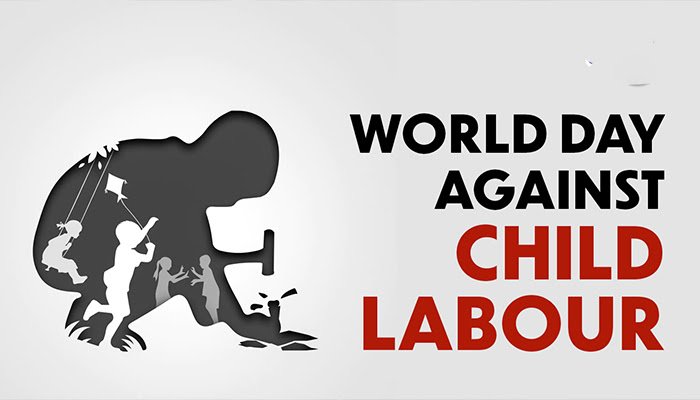World Day Against Child Labour 2025: Accelerating Progress to Protect Every Child

World Day Against Child Labour, observed annually on June 12, brings people together to raise awareness and prompt action to end child labor in all its forms. The International Labour Organization (ILO) launched this initiative in 2002. This global observance serves as a reminder that millions of children remain trapped in labor that deprives them of their childhood, education, and future.
Theme for 2025 World Day Against Child Labour
According to the International Labour Organization, the theme for 2025 is: “Progress is clear, but there’s more to do: let’s speed up efforts!”
This theme underscores the fact that, although progress has been made in reducing child labor globally, much more needs to be done. Millions of children continue to work in environments that negatively affect their health, education, and overall well-being.
The theme is a call to action, urging organizations, communities, and governments to intensify efforts to eliminate child labor. It reminds us that protecting the rights and futures of children is crucial to sustainable development.
What is Child Labour?
Child labor is the exploitation of children, especially in developing countries, where economic hardship often forces families to prioritize income over education. This practice denies children their right to a safe childhood and access to quality education.
Child labor has existed in various forms throughout history. During the Industrial Revolution, children were subjected to long working hours, often up to twelve hours a day, in factories and mines.
Industrialized Western nations increasingly relied on child labor to sustain their growing economies.
Unlike earlier times when a single income could support a household, economic downturns during industrialization made it necessary for women and children to contribute to the family income, perpetuating the use of children as cheap labor.
Today, one in five children in Africa is engaged in child labor, making it the continent with the highest rate globally. The Asia-Pacific region follows, where around 7% of children are involved in child labor.
Despite international efforts and policy interventions, approximately 160 million children worldwide remain in child labor. The problem persists, requiring stronger, more coordinated global actions to eradicate it completely.
History of World Day Against Child Labour
The International Labour Organization (ILO), a UN agency that sets global labor standards, established World Day Against Child Labour in 2002. The day was created to increase awareness about the prevalence of child labor and to inspire action to eliminate it.
Although the day was formalized in 2002, the global movement against child labor dates back much further. Key international agreements, such as ILO Convention No. 138 (concerning the Minimum Age for Admission to Employment) and Convention No. 182 (on the Worst Forms of Child Labour), have played pivotal roles in shaping national policies and protecting children’s rights globally.
The Importance of World Day Against Child Labour
The day serves as a platform for governments, organizations, and civil society to recommit to ending child labor by reinforcing the implementation of international legal frameworks, particularly ILO Conventions No. 138 and 182.
Despite notable progress, child labor remains a pressing global issue. According to UNICEF, an estimated 138 million children are still affected, with 54 million working in hazardous and exploitative conditions.
United Nations Data on Child Labour
- Child protection accounts for only 1.1% of global GDP.
This shows that a minimal portion of national resources is allocated to child welfare and protection programs. - Africa allocates just 0.4% of its GDP to child protection.
This highlights the severe underfunding of systems meant to safeguard children in the region. - Many children worldwide still lack adequate social protection.
This includes access to healthcare, education, and family support services. - The absence of essential support networks drives millions into labor.
Families struggling to meet basic needs often have no choice but to send their children to work. - Increased investment in child-focused welfare is critical.
Enhanced funding would help keep children in school, improve their health, and provide families with better prospects. - Spending disparities between countries reflect global inequality.
African nations, in particular, face serious challenges in providing equitable support for children. - Lack of government funding remains a major barrier to child protection.
Without sufficient budgets, even the best intentions cannot be translated into effective action.
Conclusion
World Day Against Child Labour 2025 brings attention to the injustices faced by millions of children. Global data and international frameworks consistently show that, to create a better future for all, we must act with urgency and determination.
Ending child labor requires more than awareness; it demands concrete action, sustained investment in social protection, and international solidarity. Only by working together can we create a world where every child enjoys a safe, healthy, and empowered childhood.





